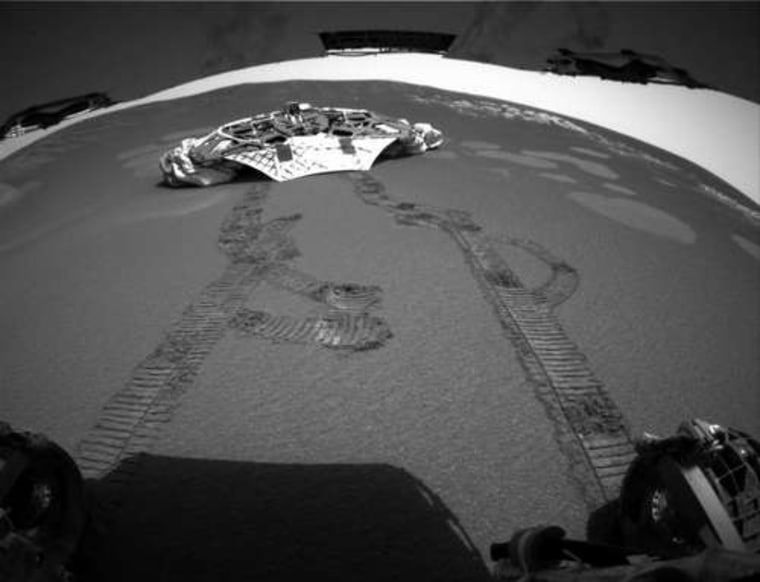NASA took the rover Opportunity on its first real drive on Mars, a trip across pebbly soil that appears to be unlike anything else seen on the surface of the Red Planet, scientists said Thursday.
Opportunity rolled forward about 11 feet (3.5 meters) on Thursday, leaving it closer to an outcrop of rocks that scientists want to spend days studying. It was the first time the rover had moved since leaving its lander Saturday.
Scientists planned for Opportunity to roll 5 more feet (1.5 meters) Friday. That should put the slabs of bedrock within reach of the rover’s robotic arm, although a little “scoot” may be needed to move Opportunity even closer, Larry Soderblom of the U.S. Geological Survey said.
Scientists skipped plans for the rover to conduct more soil tests on the way to the outcrop, opting instead to reach as quickly as possible a feature on the rocks they have nicknamed “Snout.”
Spirit back to work
On the far side of the planet, the twin rover Spirit resumed its science work Thursday after being stalled for two weeks with software problems, project manager Pete Theisinger said. Plans called for it to brush off and examine the surface of a volcanic rock, he said.
Spirit could begin rolling again by the weekend, moving toward a crater 800 feet (250 meters) away that could take a month to reach.
The software problems have stymied its half of the $820 million double mission to find evidence that the planet was once a wetter place.

Scientists planned for Opportunity to spend several days at Snout, and then spend several more driving alongside the band of rocks, Soderblom said.
Then Opportunity may turn its attention to the Martian soil, spinning one of its front wheels to dig into a spot rich in the iron-bearing mineral hematite. Opportunity previously looked at a patch of soil elsewhere in its crater that contained very little of the iron oxide, which typically forms in liquid water.
NASA also has pinpointed where Opportunity landed, Theisinger said. The rover sits inside a shallow depression about 2,300 feet (700 meters) west of a larger crater, he said.
Spirit landed on Mars on Jan. 3, followed three weeks later by Opportunity.
As of Thursday, NASA recorded 5.4 billion hits on its Mars mission-related Web sites, Theisinger said. The number has grown steadily by 100 million hits a day, he added.
